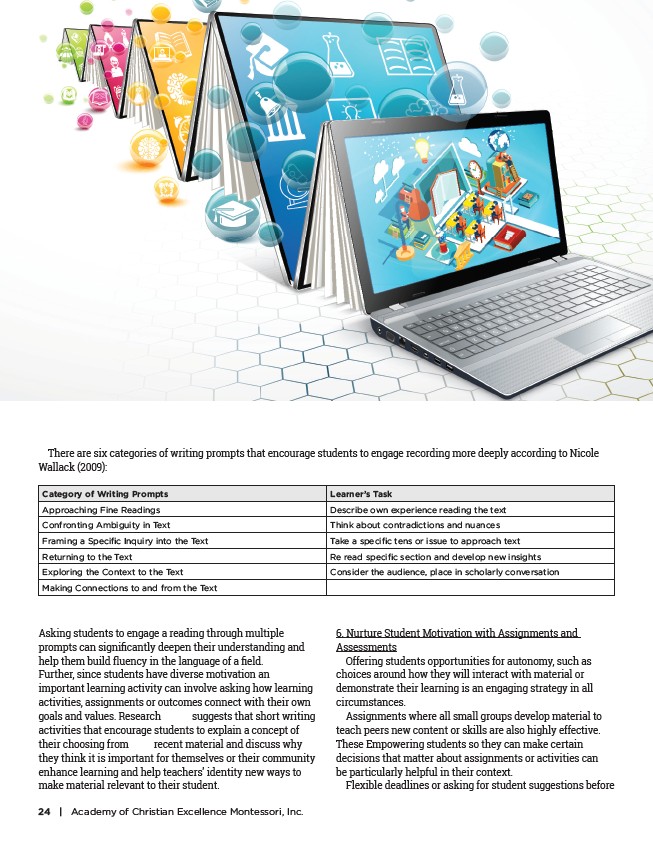
There are six categories of writing prompts that encourage students to engage recording more deeply according to Nicole
Wallack (2009):
Category of Writing Prompts Learner’s Task
Approaching Fine Readings Describe own experience reading the text
Confronting Ambiguity in Text Think about contradictions and nuances
Framing a Specific Inquiry into the Text Take a specific tens or issue to approach text
Returning to the Text Re read specific section and develop new insights
Exploring the Context to the Text Consider the audience, place in scholarly conversation
Making Connections to and from the Text
Asking students to engage a reading through multiple
prompts can significantly deepen their understanding and
help them build fluency in the language of a field.
Further, since students have diverse motivation an
important learning activity can involve asking how learning
activities, assignments or outcomes connect with their own
goals and values. Research suggests that short writing
activities that encourage students to explain a concept of
their choosing from recent material and discuss why
they think it is important for themselves or their community
enhance learning and help teachers’ identity new ways to
make material relevant to their student.
6. Nurture Student Motivation with Assignments and
Assessments
Offering students opportunities for autonomy, such as
choices around how they will interact with material or
demonstrate their learning is an engaging strategy in all
circumstances.
Assignments where all small groups develop material to
teach peers new content or skills are also highly effective.
These Empowering students so they can make certain
decisions that matter about assignments or activities can
be particularly helpful in their context.
Flexible deadlines or asking for student suggestions before
24 | Academy of Christian Excellence Montessori, Inc.